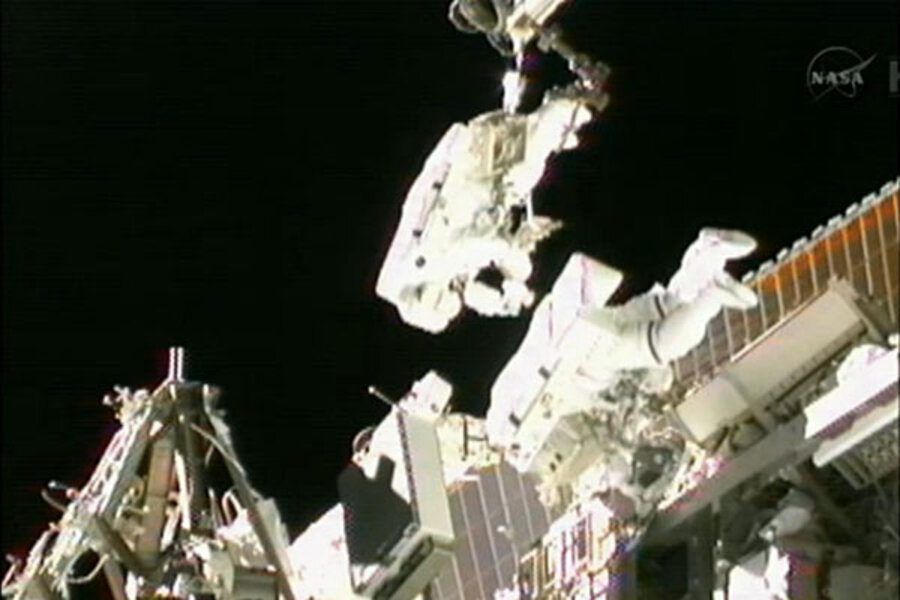Toothbrush-wielding, spacewalking astronauts repair space station
Loading...
| Cape Canaveral
A pair of spacewalking astronauts cleaned, greased and finally coaxed a jammed bolt into position on Wednesday, restoring the International Space Station's power system.
The spacewalk by NASA astronaut Sunita Williams and Japan's Akihiko Hoshide was the second in a week to replace a key part of the station's power system.
The astronauts were able to remove the faulty 220-pound (100-kg) device, known as a main bus switching unit, during a spacewalk last Thursday, but were unable to bolt a replacement into position.
While engineers at NASA's Johnson Space Center in Houston mulled over repair options, Williams and Hoshide spent the weekend fashioning tools to clean the bolt and its receptacle of metal shavings and other debris believed to be causing the problem.
The homemade tools included a wire brush formed from a spare cable and another fashioned out of a toothbrush.
Toting their makeshift brushes and bags of tools, Williams and Hoshide left the station's airlock shortly after 7 a.m. EDT (1100 GMT) and headed to where they had tethered the new power distributor into position on the station's metal framework.
They used puffs of compressed nitrogen gas to blow away debris, brushed the bolt clean and wiped it with greased cloths. Hoshide also practiced with a spare bolt to get a feel for how much force would be needed to drive the real one into its receptacle.
The moment of truth came 4-1/2 hours into the 6-1/2-hour spacewalk with Williams gently wiggling the bolt and Hoshide tightening it down.
"My left hand just fell asleep because my fingers were crossed too long," astronaut Jack Fischer radioed to the crew from Mission Control in Houston. "We're holding our breath."
A couple of minutes later Hoshide reported the power distributor was locked down.
"That is a little slice of awesome pie," Fischer said, as flight controllers applauded.
A half-hour later, power was flowing through the new unit, easing concerns the station would not have enough electricity to keep all its equipment and experiments operating.
The unit is one of four needed to route power from eight solar array wings to transformers that distribute electricity to run the $100 billion orbital outpost.
The old unit was routing power but was not fully operational. Without the new unit installed, the station could not get power from two of its eight solar panel wings.
An unrelated problem on Sunday took out power from a third wing.
The station, a project of 15 countries that flies about 250 miles (400 km) above Earth, is staffed by rotating crews of six astronauts and cosmonauts and used for dozens of medical, materials science, physics and other experiments.
Wednesday's outing was the sixth for Williams, who now holds the record for the most time spent spacewalking by a woman.
"You go, girl," NASA astronaut Peggy Whitson, the previous record holder, said in a congratulatory message relayed to Williams.
"Well thanks," Williams replied. "Like I said before, it's a matter of circumstance, time and place. Anybody could be in these big boots."
(Editing by Kevin Gray and Eric Beech)







